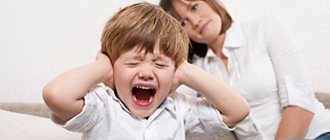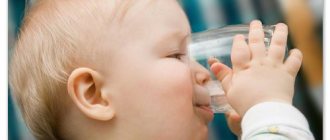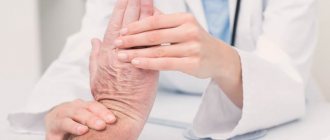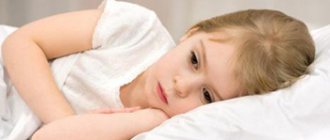Panic attacks in children are a relatively rare phenomenon, occurring in no more than 3% of patients in the general population. The disease is severe, the child suffers from unmotivated attacks of fear and internal anxiety. This creates interference in learning and is met with misunderstanding from peers, which can result in bullying. The symptoms frighten the child and parents and force them to actively look for ways to solve the problem. The search does not always lead people to the right place, i.e. the psychiatrist's office. Parents often turn to all sorts of charlatans: “traditional healers,” psychics, priests, etc., even exorcists. Needless to say, such therapy does not benefit the baby, and the lack of results only aggravates the stress.
To combat the manifestations of panic syndrome successfully, you need to stop taking it for something supernatural. Although this is a rare, but well-studied medical problem.
What you need to know.
- Panic attacks occur mainly in schoolchildren after 7-10 years of age.
- Children who have entered adolescence are automatically at risk, since their hormonal levels change significantly.
- The occurrence of the disease is impossible to predict and difficult to prevent. All that parents can do is to prevent the baby from overtiring and, if possible, reduce the stress on his psyche.
Signs of a panic attack
A panic attack can be motivated or unmotivated. A motivated attack is caused by a real source of fear, for example, a child may react in this way to a scene of domestic violence, an animal attack, etc. This reaction is normal, it is one-time and does not require any special treatment. Show your child to a psychologist so that severe fright does not develop into psychological trauma, that’s all you need. An unmotivated attack is a sign of pathology.
An attack of unmotivated fear can occur in any situation, even when the child is not in danger and is not scared. If this happens, you must consult a doctor immediately.
Symptoms and first signs of panic attacks in teenagers:
- varying degrees of anxiety: from causeless excitement to complete panic;
- dyspnea;
- tremor of the limbs;
- numbness of the body;
- dysfunction of digestion and urination;
- nausea and vomiting;
- dizziness;
- frequency of attacks.
Sometimes an exacerbation of the syndrome can be caused by intercostal neuralgia. During such attacks, breathing becomes difficult, which can be very frightening for a teenager. But in childhood this disease is rare.
Cost of services
| TREATMENT OF DEPRESSION, NEUROSIS | |
| NAME OF SERVICE | price, rub. |
| Consultation with a therapist (observation) | 3,000 rubles |
| Consultation with a neurologist (observation) | 3,000 rubles |
| Consultation with a psychologist | 2,000 rubles |
| Psychiatrist consultation | 5,000 rubles |
| Consultation with the head of the department | 4,500 rubles |
| CONSULTATIONS, INITIAL INSPECTION | |
| NAME OF SERVICE | price, rub. |
| Telephone consultation | For free! |
| Telephone consultation for relatives | For free! |
| Initial consultation with a psychiatrist-narcologist in a hospital | For free! |
| Initial consultation with a psychologist by phone | For free! |
| Visit of a narcologist and consultation at home | 1,500 rubles |
| Consultation with a psychotherapist, psychologist in the clinic | 2,000 rubles |
| Initial appointment, examination by a doctor, cubital catheter, ECG | 2,500 rubles |
| Consultation with a therapist, neurologist, surgeon | 3,000 rubles |
| Family consultation with a psychologist | 3,000 rubles |
| Psychiatrist consultation | 4,000 rubles |
| Consultation with the head of the department | 4,500 rubles |
| PROMOTIONS AND DISCOUNTS | |
| When applying again | 5% discount on treatment |
| Disabled people and war veterans | 5% discount on treatment |
| Large families | 10% discount on treatment |
* Dear patients! The administration tries to promptly update the price list posted on the website, but in order to avoid possible misunderstandings, we ask you to clarify the cost of services on the day of your call by calling 24/7.
The posted price list is not an offer.
Get a free consultation
+7(495) 798-30-80
Reasons for appearance
There are three types of causes of illness: biological, psychological and genetic. The first include diseases of the internal organs, the symptom of which may be panic syndrome. Most often, this is a malfunction of the adrenal glands, leading to uncontrolled excess releases of catecholamines and general hormonal imbalance. A biological predisposition to a disease is possible, the activation of which requires an external factor: stress, psychological trauma, stressful life circumstances.
The psychological causes of panic attacks in teenagers are all kinds of personality disorders, excessive stress, pressure from parents and teachers, bullying from peers, problems of the transition period, etc. Morbidity rates are rising among children from disadvantaged families. Psychological reasons include the following factors:
- violence in family;
- alcoholism, drug addiction, reduced social responsibility of parents;
- authoritarian education.
Genetic causes are bad heredity. The risk of morbidity increases by an average of 17% in the presence of first-degree relatives who have previously experienced attacks. However, the genetic factor may or may not appear, so the causes of morbidity are best considered in their entirety.
The psychological factor often acts as a trigger, activating other predispositions of the body. Without it, the disease may never arise, even if all other prerequisites for its development exist.
Characteristic symptoms of PTSD according to DSM-IV
- Constant, repeated reliving of the events that caused the trauma.
- Persistent memories of a traumatic situation: various components of those events can be observed in children's games; the child’s thoughts, sensations - all this constantly reminds him of unpleasant events.
- Anxious dreams with scary and unclear content, nightmares that continue for a long time.
- A persistent feeling of repetition of the event: it seems that the situation is returning (flashback); hallucinations, illusions and disparate elements of a repeating event appear.
- In the presence of certain elements reminiscent of a traumatic event, a strong physiological reaction and a state of intense psychological imbalance are noted.
- The desire to avoid situations associated with trauma, insensitivity, indifference. This should be expressed by three or more of the following: a reluctance to engage in activities, places, or people that remind you of the trauma; an attempt to avoid any mention, thoughts or feelings about the traumatic events that occurred; decreased interest in various activities, both social and educational; reluctance to communicate with other people; inability to remember some important details of a traumatic situation; limitations in normal feelings and affective manifestations; an ongoing feeling of doom and hopelessness.
- Increased agitation should manifest at least two of the following symptoms: difficulty falling asleep or maintaining sleep; increased irritability and outbursts of anger; difficulty concentrating; overreaction to stimuli.
Consequences of panic attacks in children and adolescents
An attack can overtake a person at any time, for example, in a potentially life-threatening environment, in a public place, during an important event, etc. This gives rise to another mental disorder - anticipation syndrome. The child is afraid that an attack is about to happen, and is constantly waiting for it. Many patients are afraid to leave the house and, as a result, cannot live a full life. This is especially dangerous for a child, because he is at the stage of intensive physical and psycho-emotional development, must move a lot, communicate a lot, and constantly gain knowledge and experience. Turning him into a recluse at this period of life is disastrous.
Panic attacks in teenagers are perceived especially acutely by them themselves, when they are so full of problems against the backdrop of a strong hormonal surge. He begins to feel almost disabled at a time when it is very important to prove himself, take his place in society, and learn to communicate with the opposite sex.
Comorbidity
Any events that traumatize the psyche of children can cause a wide variety of negative consequences. It is reliably known that PTSD in children is often accompanied by other mental disorders. The risk of developing disorders such as oppositional protest disorder, hyperactivity and attention deficit increases significantly. Traumatic events in childhood can also cause ongoing anxiety and depression. Among other things, there has been a strong relationship between the abuse of alcohol, narcotic and psychotropic substances and the presence of post-traumatic stress disorder. The likelihood of developing abnormalities caused by excessive addiction to these substances in adulthood increases many times over if signs of PTSD were observed in childhood.
Particular attention should be paid to research on the comorbidity of PTSD and somatic diseases in girls. We studied groups of girls aged 0 to 8 years, and from 9 to 17 years. A clear relationship has been found between a diagnosis of post-traumatic stress disorder and the presence of a wide variety of health problems. Diseases of the gastrointestinal tract, circulatory disorders, and infectious diseases were noted here. Chronic fatigue, pain in joints and muscles, and general weakness were also observed.
First aid
First of all, during an attack, you need to calm down and begin to think that a panic attack does not pose a health hazard. No one has ever died from this.
You need to learn to control your breathing while breathing evenly and elongated. It helps to start counting or considering what is around.
If a loved one is nearby during an attack, then you need to take him by the hand and talk.
You must try to completely relax and think about good things. If you feel hot, you need to wash with cold water. If it’s cold, you can drink tea or take a warm shower.
Diagnosis and treatment
Diagnosing the consequences of trauma in children is associated with a number of difficulties. This is because at a very young age children are unable to accurately describe what they are feeling. Parents often underestimate the symptoms or do not want to notice them at all; they cannot impartially assess their child’s behavior and provide all the necessary information. Children who grew up in boarding homes constitute a separate risk group, since they often experience violence, bullying, bullying and other sources of trauma. Therefore, it is very important to have in clinical practice the appropriate skills and tools to promptly determine whether a child has been injured or not.
A special questionnaire has been developed for parents, “List of Pediatric Symptoms,” which they must fill out. This questionnaire is the main tool in screening for symptoms of emotional and behavioral disorders. It contains three tests that assess attention, externalizing (disruptive behavior) and internalizing (anxiety and depression) disorders in children. These tests have been specially designed for children aged 6-18 years and allow the most accurate identification of the above problems. In general, there are quite a lot of methods for diagnosing post-traumatic stress disorder in children. And all of them are successfully used in practice.
The most effective treatment for PTSD in children is trauma-focused cognitive behavioral therapy (CBT-T). This method of therapy is considered the standard and at the same time the most flexible method of treating PTSD. It is based on generally accepted principles of family and humanity. Its high effectiveness has long been proven and confirmed by many years of research and experience working with children who have been diagnosed with PTSD.
In 2010, a study was conducted on the effectiveness of cognitive behavioral therapy in the treatment of very young children (3-6 years old). After twelve sessions of psychotherapy, there was a significant improvement in the manifestations of PTSD, while concomitant symptoms (depression, anxiety, ADHD, OPD) remained virtually unchanged.
Equally successful for adults, children, and adolescents, long-term exposure therapy is considered a method of treating PTSD. It is based on weakening or breaking the random links that bind PTSD symptoms.
There is another very effective option for psychotherapy - “child - parent”. It is used for children in preschool age who have experienced a traumatic event. It is especially effective in cases where the treatment is for a child who has been repeatedly injured. This type of psychotherapy involves the joint participation of parents, children and a doctor in sessions. This helps parents learn how to behave in a given situation, and how to provide help to the child when he needs it. According to long-term observations, the parent-child treatment method helps to significantly reduce the symptoms of PTSD and depression in both children and parents.
The Cochrane Collaboration has conducted research into how effective a combination of pharmacological and psychotherapeutic therapies is in treating post-traumatic stress disorder. The main question in these studies was: what is more effective in treating PTSD: combining these methods or using them separately? But insufficient evidence of the use of such a combination in practice has been identified to draw unconditional conclusions about the effectiveness of the simultaneous use of drug and psychological therapy. However, current guidelines for the treatment of PTSD still recommend the use of both methods, especially in refractory cases of PTSD.
Medication and psychological assistance
The psychologist explains how to behave during attacks, how to prevent them, and teaches relaxation skills. Sessions are scheduled if necessary. During the sessions, a calm perception of emerging life problems is formed, a change in attitude towards oneself and people.
The optimal way to treat PA is considered to be a combination of work with a specialist and medications. The drugs should help stop PA. These include, for example, benzodiazepines. However, with constant use of these drugs, drowsiness and fatigue occur, which adversely affects the learning process.
There are contraindications, you need to consult a specialist!
Is it possible to outgrow PA?
Some dads and moms hope that a panic attack, like a hysteria, will simply go away on its own with age. But doctors warn: if PA is not treated, it will develop into panic disorder, mental illness, and will interfere with the teenager’s ability to socialize, build relationships or a career.
That is why parents need to know the symptoms of PA in their child:
- rapid heartbeat and frequent shallow breathing;
- pale skin;
- perspiration on the palms, back;
- complaints of nausea, stomach cramps;
- tremor of the limbs;
- headache or dizziness.
These symptoms indicate problems with the autonomic part of the nervous system and require qualified therapy.
What happens to the child?
During a panic attack, something like this happens in the human body:
- A sharp surge of adrenaline.
- The consequence is vasoconstriction, increased breathing and heart rate.
- Increased blood pressure.
- Rapid breathing increases the release of carbon dioxide, which further increases anxiety.
- Carbon dioxide changes the pH of the blood. This leads to dizziness and numbness of the limbs.
- Vasospasm slows down the delivery of oxygen to the tissues: lactic acid accumulates, increasing the manifestation of the attack.







